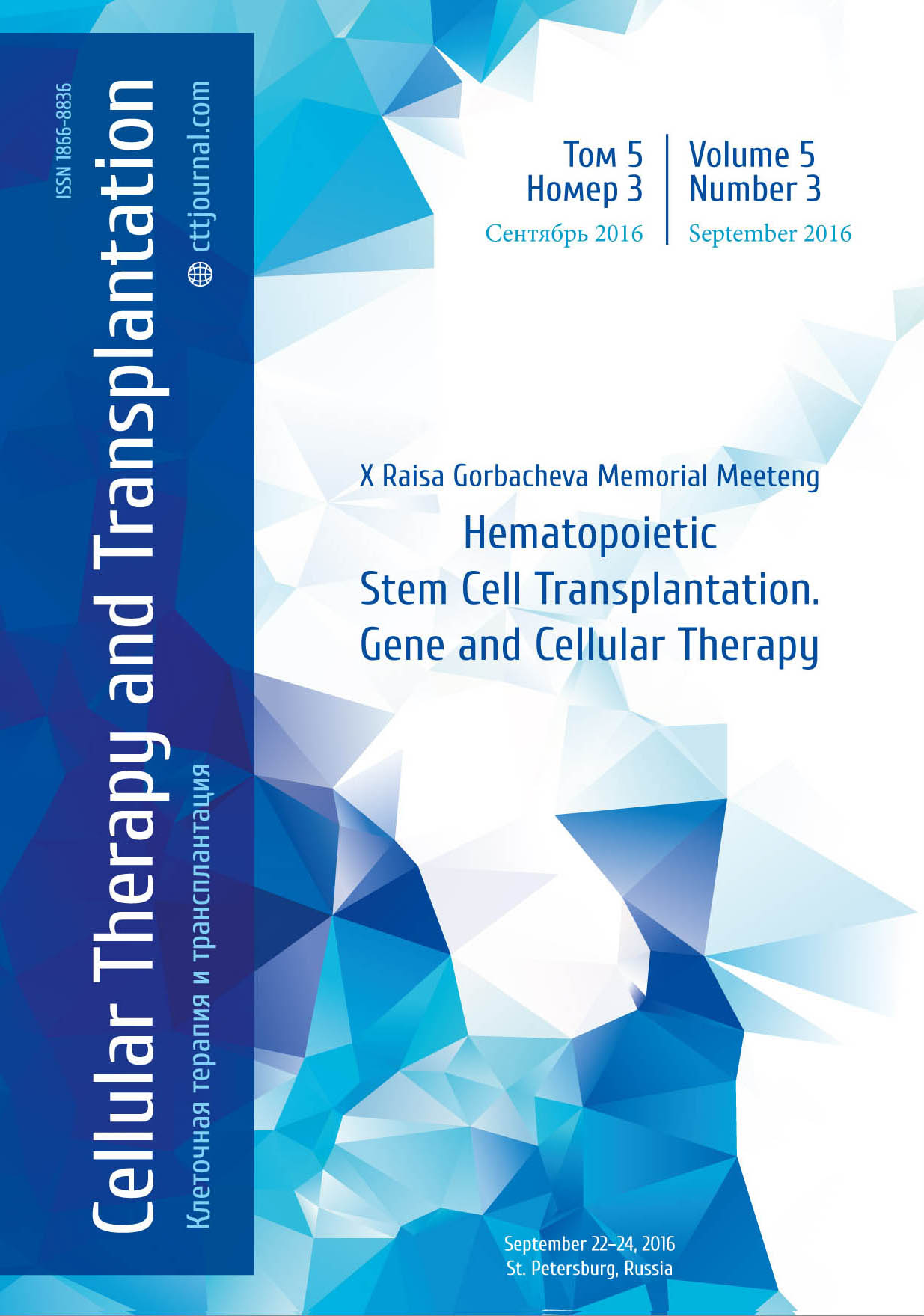Influence of mixed chimerism upon outcomes of allogeneic stem cell transplantation (allo-SCT) in patients with non-malignant diseases
2Research Institute of Medical Cell Technologies, Ekaterinburg, Russia
3Ural State Medical University, Ekaterinburg, Russia
Contact: Dr. Larisa Vakhonina
E-mail: vakhonina_larisa@mail.ru
Accepted 22 September 2016
Summary
Introduction
AlloSCT is the only curative option for treatment of hematological disorders with suppressed hematopoiesis and primary immune deficiencies. Nonmyeloablative conditioning (MAC) regimens lead to long persistence of mixed chimerism (MC) in majority of the patients. Purpose of our study was to estimate relationships between the type of hematopoietic chimerism and development of GVHD following alloSCT being performed in patients with non-malignant diseases.
Patients and methods
Eleven patients (8 boys and 3 girls) at a median age of 9 years (range 3 to 17) were included in this study, including seven 7 patients with severe aplastic anemia (SAA); two, with Fancony anemia (FA); one case of thalassemia, one with Nijmegen syndrome. The patirnts were treated at the Pediatric Oncology and Hematology Center (Regional Children Hospital No.1) from 2008 to 2016. Stem cell donors were as follows: siblings (7 cases), nonrelated HLA-matched donors (n=4). Bone marrow aspirates and mobilized peripheral hematopoietic stem cells were used in 5 and 6 cases, respectively. Conditioning regimens included fludarabine, cyclophosphamide and horse ATG for SAA patients. For FA and Nijmegen syndrome patients, this schedule was augmented by low-dose busulfan treatment. In thalassemic patient, we used MAC with busulfan, fludarabin and horse ATG. In majority of cases, GVHD prophylaxis consisted of combined tacrolimus and methotrexate. In cases of unrelated alloSCT, the patients were additionally treated with mycophenolate mofetil. A median follow-up period was 30 mo (range 4-90). Quantitative evaluation of donor chimerism was done by multiplex amplification of STR loci with subsequent fragment analysis using «COrDIS Plus» kit («Gordiz», Russia). We studied chimerism for the both marrow and peripheral blood cells, as well as for CD3+ and CD19+ lymphocyte subpopulations. Donor genotype of ≥99% hematopoietic cells was considered a complete donor chimerism (CDC), whereas levels of < 99% were regarded as mixed chimeric state.
Results
All the patients did successfully engraft, and all these patients were alive at the present time. There were no severe life-threatening complications, infections, or graft rejection observed. Only two patients achieved CDC by the day +28, and only these patients retained complete chimerism at the day +100. At this time point, a mixed chimerism was most common in CD3+ lymphocytes. One year after SCT, a proportion of CDC patients increased up to 82% (2 patients are at earlier post-transplant terms). There were no correlations between the engraftment terms and chimerism values at the day +28, like as between the CD34+ cell dose transplanted, and chimerism levels (p>0.05 in both cases). Interestingly, severe GVHD was noted in only two female patients with CDC at day +28. The first case exhibited grade III aGVHD following HSCT from a non-related donor; the second case showed extensive form chronic GVVHD since 1 year after HSCT from a sibling. There were no other cases of severe (grade III-IV) aGVHD in the patients observed. Localized form of chronic GVHD was revealed in 4 cases (36%). In other patients, no signs of chronic GVHD were seen.
Conclusions
Despite limited number of observations, we assumed that fast achievement of CDC may be associated with severe GVHD. And, vice versa, long persistence of mixed chimerism seems to prevent the GVHD emergence. However, our findings should be confirmed in larger group of patients and, preferably, in multicenter settings.
Keywords
Allogeneic hematopoietic cell transplantation, host-versus-gra disease, chimerism
Accepted 22 September 2016


